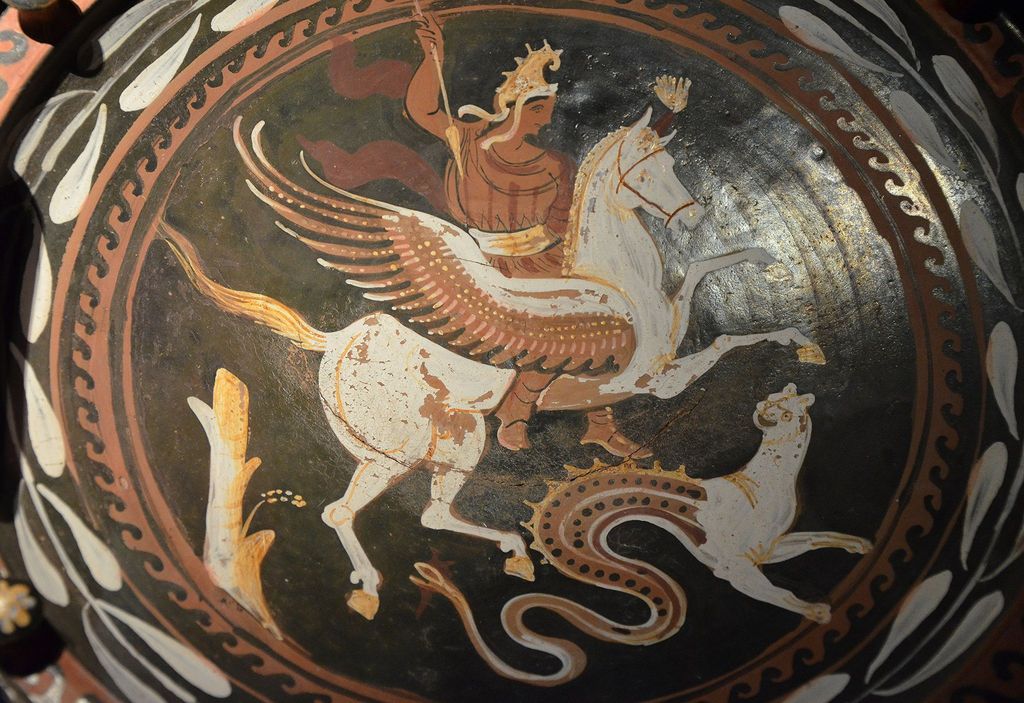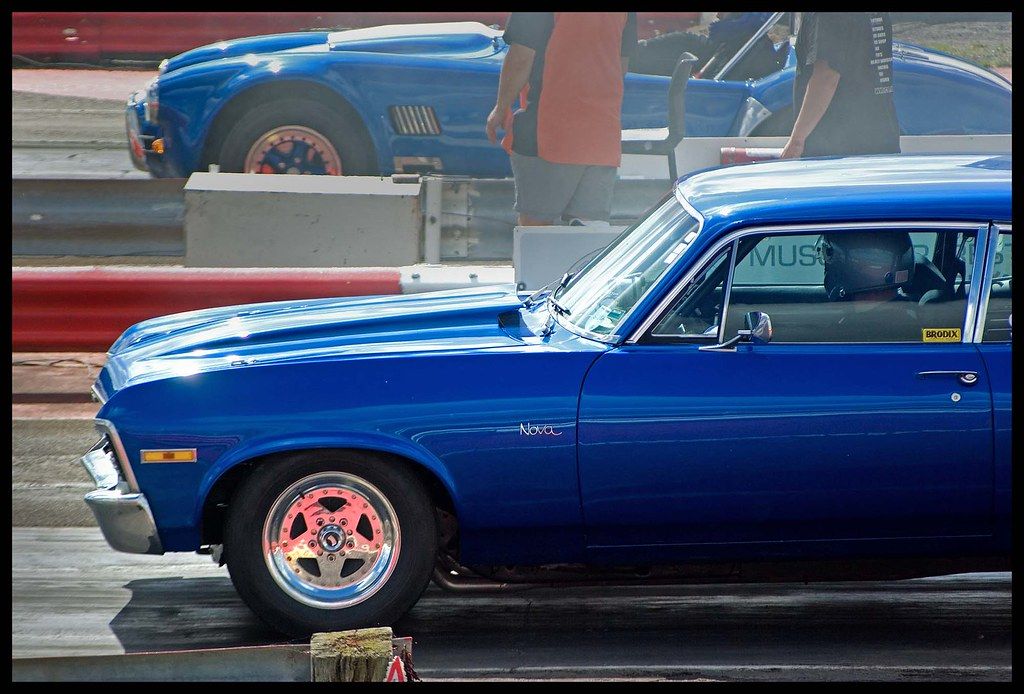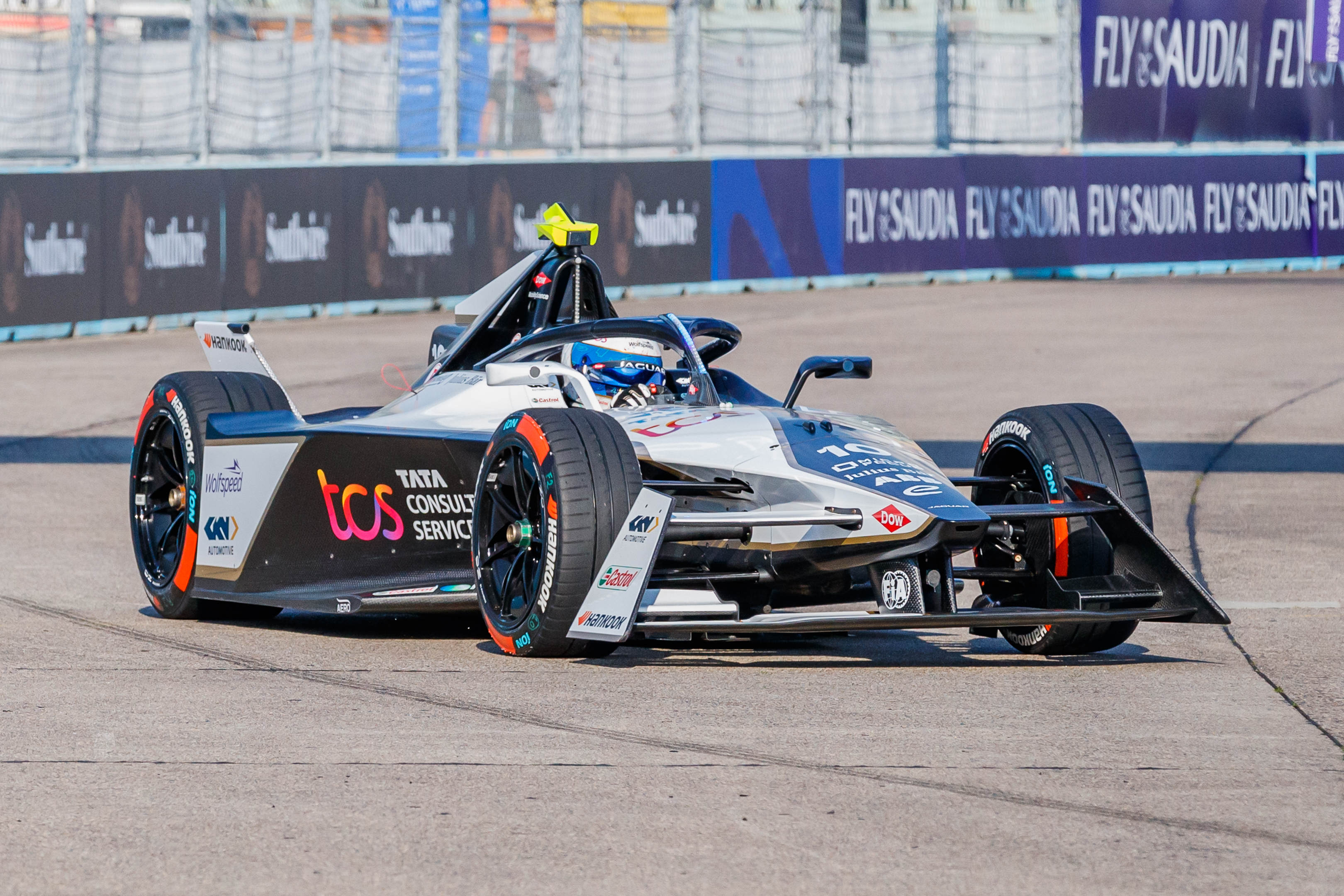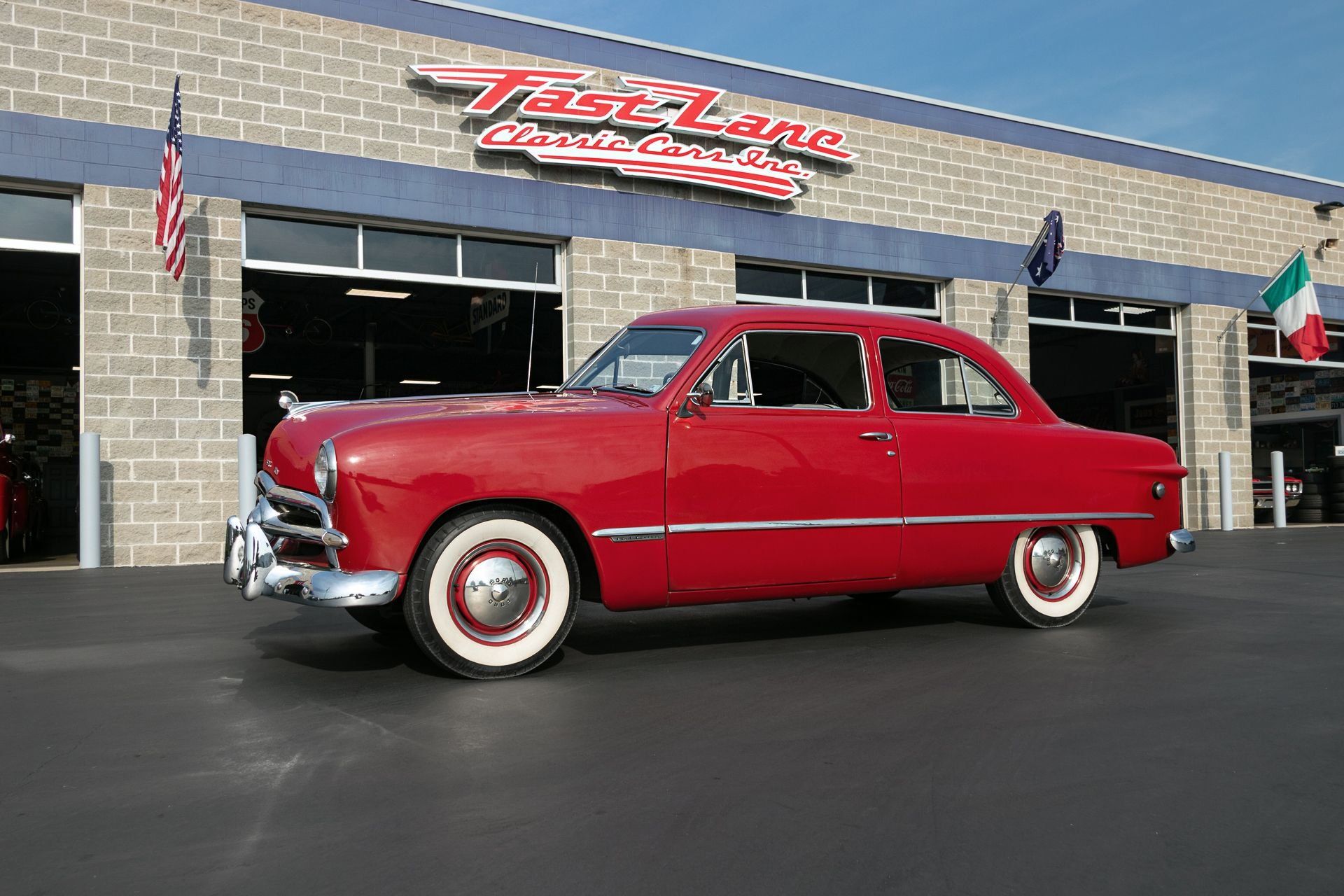
Something undeniable in the automotive world is the unique appeal of classic cars and vintage trucks. While modern vehicles undoubtedly offer advanced safety features, superior efficiency, enhanced speed, and remarkable reliability, they often lack the distinct character and diverse aesthetics that defined earlier eras. Today, a pervasive sameness seems to dominate vehicle design, with models sharing similar body styles and a limited palette of colors, often necessitating modifications to truly stand out.
Yet, there’s an undeniable magic to an old vehicle, a connection to a bygone era where automotive design was bold, expressive, and deeply personal. Classic cars, in particular, were crafted with a different philosophy, emphasizing toughness, flash, and a captivating visual interest that allowed owners to express their individuality on the open road. Their plush, often luxurious interiors weren’t just about comfort; they contributed to a sense of occasion, making every drive an experience. These machines truly ruled the roads of their time, and their presence continues to command attention, making drivers feel a distinctive kind of cool behind the wheel.
It’s no surprise, then, that classic car ownership is a source of immense pride for countless enthusiasts. These cherished vehicles are more than mere transportation; they are historical artifacts on wheels, frequently shared and admired by a wide community of admirers. We’re embarking on a journey to explore some of the most desired classic cars, each a testament to a unique period of automotive innovation and style. These are the machines that ignite passion, evoke nostalgia, and are truly coveted by collectors around the globe, making them ideal additions to any discerning garage.
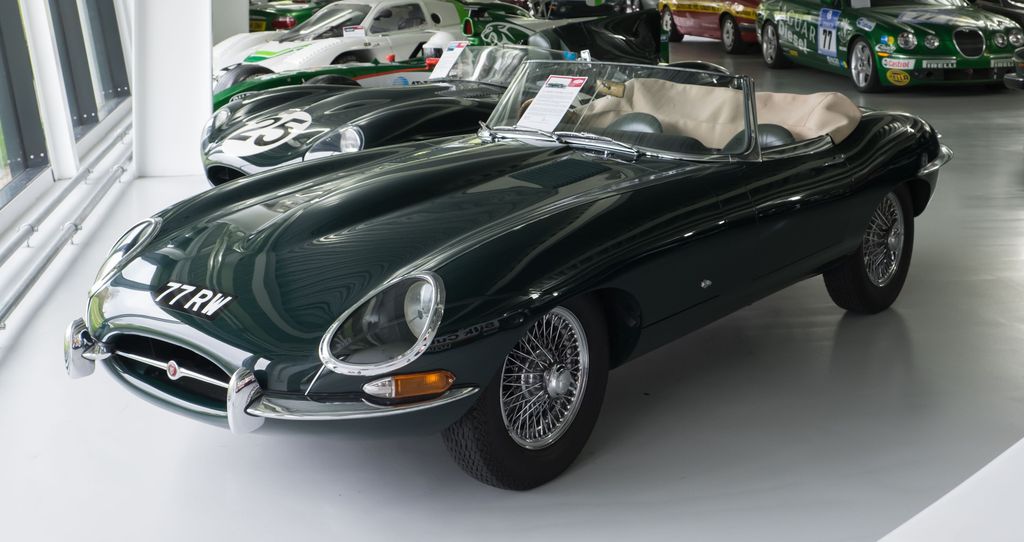
1. **1961 Jaguar E-Type** The 1961 Jaguar E-Type stands as a singular masterpiece of automotive design, a vehicle whose aesthetics are so breathtaking that it transcends mere transportation to become a work of art. Its debut immediately set a new benchmark for sports car elegance, marrying graceful, flowing lines with an aggressive, purposeful stance. This iconic silhouette and undeniable road presence led none other than Enzo Ferrari to famously declare it “the most beautiful car ever made,” an endorsement that speaks volumes about its unparalleled visual impact and lasting legacy.
Beyond its captivating looks, the E-Type was a marvel of engineering, delivering performance figures that were truly revolutionary for its time. Underneath its sculpted bonnet lay a potent 3.8-liter inline-six engine, an engineering feat that propelled the car to a remarkable top speed of 150 mph. This astonishing velocity, once unheard of for production vehicles, was complemented by a sophisticated independent rear suspension system, ensuring both exhilarating speed and refined, precise handling that elevated the driving experience to new heights.
For collectors, the 1961 Jaguar E-Type is not merely a desirable asset but a highly cherished piece of automotive history, valued for its rarity and profound historical significance. It represents a pivotal moment in the evolution of sports cars, showcasing a perfect synthesis of stunning design, advanced engineering, and exhilarating performance. Its enduring appeal lies in its ability to captivate enthusiasts with its timeless beauty and to provide a tangible link to an era of groundbreaking automotive innovation, cementing its place as an indispensable addition to any serious collection.
Car Model Information: 1971 Jaguar E-Type Restomod
Sp: uk
Name: Jaguar E-Type
Caption: 1961 E-Type Series 1 3.8-Litre, the first production model of this open two-seater
Aka: Jaguar XK-E , Jaguar V-12
Manufacturer: Jaguar Cars
Production: 1961–1974
Class: Sports car
Predecessor: Jaguar XK150
Related: Jaguar D-Type,Jaguar XJ13
Successor: Jaguar XJS
Layout: FMR layout
Assembly: Coventry,England
Designer: Malcolm Sayer
Categories: 1970s cars, 2+2 coupés, All articles with dead external links, All articles with specifically marked weasel-worded phrases, All articles with unsourced statements
Summary: The Jaguar E-Type, or the Jaguar XK-E for the North American market, is a British front mid-engined sports car that was manufactured by Jaguar Cars Ltd from 1961 to 1974. Its sleek appearance, advanced technologies, high performance, and competitive pricing established it as an icon. The E-Type’s claimed 150 miles per hour (240 km/h) top speed, sub-7-second 0 to 60 mph (97 km/h) acceleration, largely unitary body construction, front and rear independent suspension with disc brakes, mounted inboard at the rear, and rack-and-pinion steering spurred industry-wide changes.
The E-Type was based on Jaguar’s D-Type racing car, which had won the 24 Hours of Le Mans for three consecutive years beginning in 1955.
The E-Type employed what was, for the early 1960s, a novel design principle, with a front subframe carrying the engine, front suspension and front bodywork bolted directly to the body tub. No ladder frame chassis, as was common at the time, was needed and as such the first cars weighed only 1,315 kg (2,899 lb).
It is rumored that, on its debut on 15 March 1961, Enzo Ferrari called it “the most beautiful car ever made”, but this statement is not fully confirmed. In 2004, Sports Car International magazine placed the E-Type at number one on their list of Top Sports Cars of the 1960s. In March 2008, the Jaguar E-Type ranked first in The Daily Telegraph’s online list of the world’s “100 most beautiful cars” of all time.
Get more information about: Jaguar E-Type
Buying a high-performing used car >>>
Brand: Jaguar Model: E-Type
Price: $64,900 Mileage: 2,455 mi.
Read more about: Golden Icons: Valuable Cars of the 1960s and Their Enduring Legacy
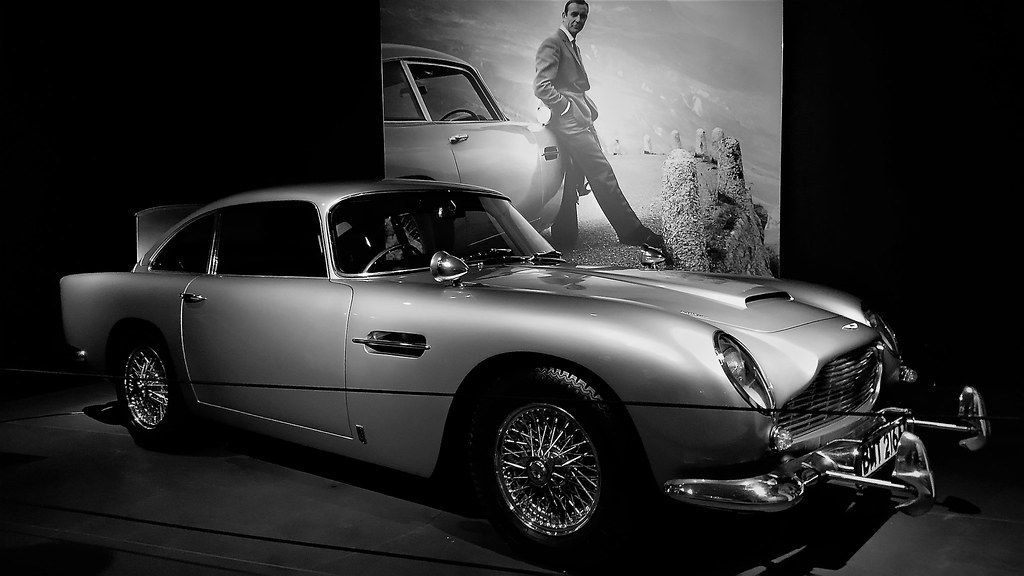
2. **1964 Aston Martin DB5** The 1964 Aston Martin DB5 became an undeniable icon of elegance and sophistication, cemented in popular culture through its legendary role in the James Bond film “Goldfinger.” This cinematic prominence amplified its already impressive presence, making it synonymous with bespoke luxury, high-performance capability, and an understated yet powerful British charm. Its very image evokes a sense of refined adventure and timeless class, appealing to enthusiasts who appreciate both heritage and discreet power.
At the heart of the DB5’s allure was its formidable performance, driven by a 4.0-liter inline-six engine that robustly delivered 282 horsepower. This impressive output allowed the car to achieve a top speed of 145 mph, a testament to its engineering prowess and a statement of its capabilities as a grand tourer. The DB5 was also at the forefront of automotive technology for the 1960s, featuring advanced aluminum bodywork that contributed to its lightweight agility and cutting-edge disc brakes for superior stopping power, reinforcing its status as a sophisticated machine.
For discerning collectors, the Aston Martin DB5 is a prized acquisition, not solely for its luxurious design and impeccable craftsmanship but equally for its indelible association with the James Bond franchise. This unique blend of cinematic history, performance pedigree, and exquisite design elevates the DB5 beyond a mere car, transforming it into a cultural artifact. Its desirability continues to climb, making it a cornerstone for any collection aiming for a perfect blend of style, speed, and enduring cultural relevance.
Car Model Information: 2022 Mazda CX-5 2.5 S Premium
Name: Aston Martin DB5
Manufacturer: Aston Martin
Production: 1963–1965 (1,059 units),2020 (25 units)
Assembly: Newport Pagnell
Designer: Carrozzeria Touring Superleggera
Class: Grand tourer
BodyStyle: coupé
Layout: Front-engine, rear-wheel-drive layout
Engine: DOHC,Straight-6,3995 cc
Order: flip
Abbr: on
Powerout: convert
Transmission: ZF Friedrichshafen
Length: 4570 mm
Width: 1680 mm
Wheelbase: 98.0 in
Predecessor: Aston Martin DB4
Successor: Aston Martin DB6
Doors: 2
Weight: 3311 lb
Sp: uk
Categories: Articles with short description, Aston Martin vehicles, CS1: unfit URL, Cars discontinued in 1965, Cars introduced in 1963
Summary: The Aston Martin DB5 is a British grand tourer (GT) produced by Aston Martin and designed by Italian coachbuilder Carrozzeria Touring Superleggera. Originally produced from 1963 to 1965, the DB5 was an evolution of the final series of DB4. The “DB” designation is from the initials of David Brown who built up the company from 1947 onwards.
The DB5 is best-known for its role in the James Bond films. It was first driven by the fictional spy in the film Goldfinger (1964). In 2013, the car featured on a “British Auto Legends” postage stamp issued by the Royal Mail.
Get more information about: Aston Martin DB5
Buying a high-performing used car >>>
Brand: Aston Martin Model: DB5
Price: $25,680 Mileage: 32,780 mi.
Read more about: Engine Roar and Silver Screen Glory: The Some Most Iconic Movie Cars That Left an Indelible Mark
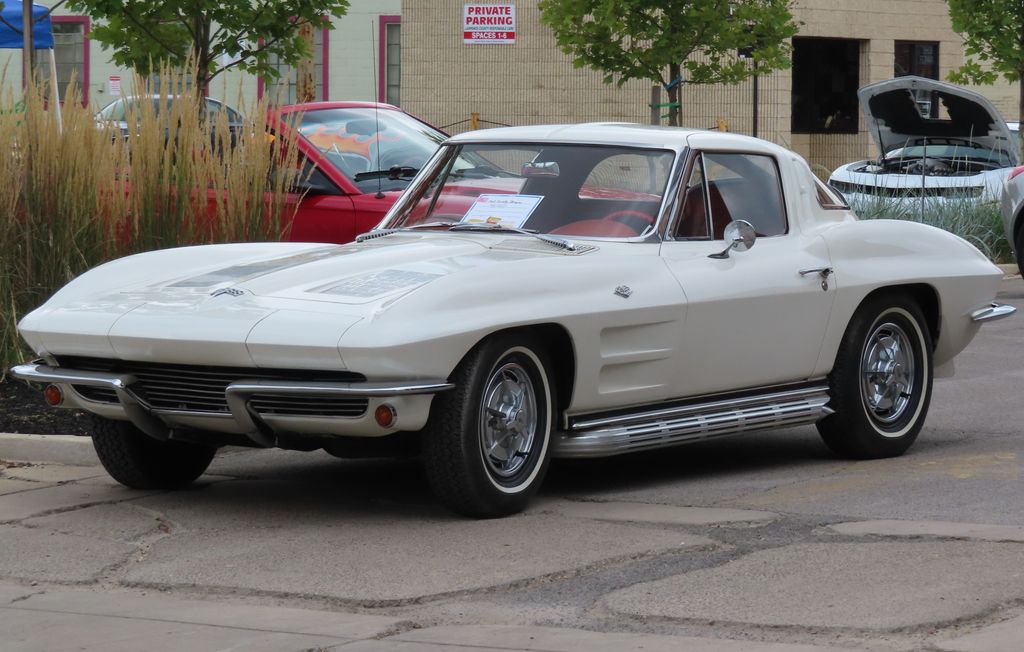
3. **1963 Chevrolet Corvette Sting Ray** The 1963 Chevrolet Corvette Sting Ray is instantly recognizable, a bold statement in design that profoundly shaped the American sports car landscape. Its distinctive split rear window, a feature unique to this inaugural C2 model year, along with its innovative hidden headlights, epitomize a design philosophy that was both radical and visionary. These stylistic choices not only set it apart visually but also underscored its aggressive, performance-oriented character, signaling a new era for the Corvette brand.
Underneath its striking fiberglass body, the Sting Ray was engineered for exhilarating performance. It was powered by a formidable 327 cubic inch V8 engine, a powerhouse capable of producing up to an impressive 360 horsepower, delivering thrilling acceleration and a visceral driving experience. The combination of its lightweight fiberglass construction and a groundbreaking independent rear suspension system provided exceptional handling and ride dynamics, offering a level of sophistication previously unseen in American sports cars and making it a true driver’s machine.
For collectors, the 1963 Sting Ray represents a pivotal, transformative moment in the storied history of the Chevrolet Corvette. Its bold design, particularly the iconic split window, combined with its advanced mechanicals, marks it as a highly sought-after classic. It embodies a perfect blend of American ingenuity, raw power, and an unmistakable aesthetic that continues to captivate enthusiasts, making it an essential and celebrated centerpiece in any serious collection of high-performance vehicles.
Car Model Information: 2022 Mazda CX-5 2.5 S Premium
Name: Chevrolet Corvette (C2)
Caption: 1963 Chevrolet Corvette Sport Coupe
Manufacturer: Chevrolet
Aka: Chevrolet Corvette Sting Ray
Production: August 1962–July 1967
ModelYears: 1963–1967
Platform: Series 0800 (1962-1964),Series 194 (1965-1967)
Chassis: Body-on-frame
Assembly: St. Louis, Missouri
Predecessor: Chevrolet Corvette (C1)
Successor: Chevrolet Corvette (C3)
Class: Sports car
BodyStyle: Convertible (car),coupé
Layout: Front-engine, rear-wheel-drive layout
Engine: {{cvt,327,cuin,L,1,Chevrolet small-block engine#327,V8 engine
Wheelbase: cvt
Length: cvt
Width: cvt
Height: cvt
Weight: cvt
Transmission: manual transmission,manual transmission,Powerglide
Related: Bill Thomas Cheetah
Designer: Larry Shinoda
Categories: 1960s cars, All articles needing additional references, All articles with specifically marked weasel-worded phrases, All articles with unsourced statements, Articles needing additional references from July 2024
Summary: The Chevrolet Corvette (C2) is the second-generation Corvette sports car, produced by the Chevrolet division of General Motors (GM) for the 1963 through 1967 model years.
Get more information about: Chevrolet Corvette (C2)
Buying a high-performing used car >>>
Brand: Chevrolet Model: Corvette Sting Ray
Price: $25,680 Mileage: 32,780 mi.
Read more about: The 10 Exciting Classic Sports Cars You Can Own Without Breaking the Bank
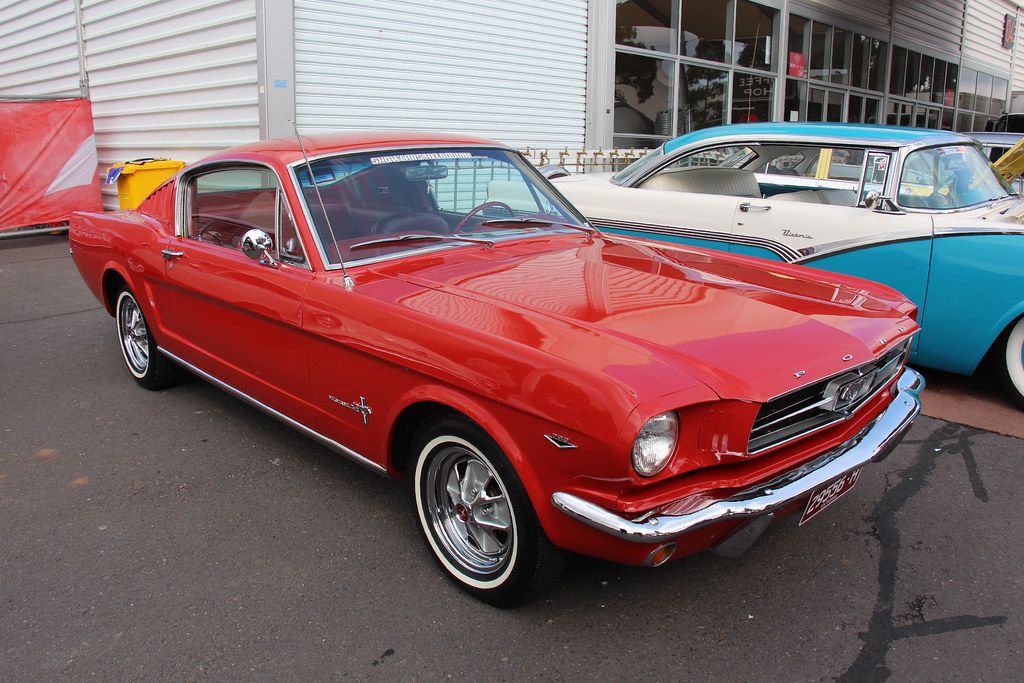
4. **1965 Ford Mustang** The 1965 Ford Mustang didn’t just introduce a new car; it revolutionized the entire automotive industry by pioneering the now-iconic pony car concept. Its brilliantly conceived blend of sporty design, compact dimensions, and an unexpectedly affordable price point made it an overnight sensation upon its debut. This strategic combination democratized the sports car experience, making performance and style accessible to a broader audience and sparking a phenomenon that would define a generation of vehicles.
The Mustang’s widespread appeal was further amplified by its versatile range of engine options, catering to diverse preferences and budgets. Enthusiasts could choose from various powerplants, including the robust 289 cubic inch V8, which delivered a thrilling blend of power and responsiveness. This configurability allowed buyers to tailor their Mustang to their desires, whether they sought economical daily driving or spirited performance, further cementing its status as a vehicle with broad appeal and immense customization potential.
Collectors today hold the 1965 Mustang in exceptionally high regard, not just for its inherent beauty and performance, but primarily for its monumental cultural impact. It transcended its role as a mere car to become a symbol of youthful rebellion, freedom, and American ingenuity. Its enduring legacy, combined with its customizable nature and historical significance as the progenitor of an entire vehicle segment, ensures its position as a cornerstone piece in any collection of influential and beloved classic automobiles.
Car Model Information: 2024 Ford Mustang Mach-E GT
Name: Ford Mustang
Caption: 2018 Ford Mustang GT 5.0
Aka: Ford T5 (Germany)
Manufacturer: Ford Motor Company
Production: March 1964 – present
ModelYears: 1965–present
Class: Unbulleted list
BodyStyle: Unbulleted list
Layout: Front-engine, rear-wheel-drive layout
Categories: 1970s cars, 1980s cars, 1990s cars, 2+2 coupés, 2000s cars
Summary: The Ford Mustang is a series of American automobiles manufactured by Ford. In continuous production since 1964, the Mustang is currently the longest-produced Ford car nameplate. Currently in its seventh generation, it is the fifth-best selling Ford car nameplate. The namesake of the “pony car” automobile segment, the Mustang was developed as a highly styled line of sporty coupes and convertibles derived from existing model lines, initially distinguished by “long hood, short deck” proportions.
Originally predicted to sell 100,000 vehicles yearly, the 1965 Mustang became the most successful vehicle launch since the 1927 Model A. Introduced on April 17, 1964 (16 days after the Plymouth Barracuda), over 400,000 units were sold in its first year; the one-millionth Mustang was sold within two years of its launch. In August 2018, Ford produced the 10-millionth Mustang; matching the first 1965 Mustang, the vehicle was a 2019 Wimbledon White convertible with a V8 engine.
The success of the Mustang launch led to multiple competitors from other American manufacturers, including the Chevrolet Camaro and Pontiac Firebird (1967), AMC Javelin (1968), and Dodge Challenger (1970). It also competed with the Plymouth Barracuda, which was launched around the same time. The Mustang also had an effect on designs of coupes worldwide, leading to the marketing of the Toyota Celica and Ford Capri in the United States (the latter, by Lincoln-Mercury). The Mercury Cougar was launched in 1967 as a unique-bodied higher-trim alternative to the Mustang; during the 1970s, it included more features and was marketed as a personal luxury car.
From 1965 until 2004, the Mustang shared chassis commonality with other Ford model lines, staying rear-wheel-drive throughout its production. From 1965 to 1973, the Mustang was derived from the 1960 Ford Falcon compact. From 1974 until 1978, the Mustang (denoted Mustang II) was a longer-wheelbase version of the Ford Pinto. From 1979 until 2004, the Mustang shared its Fox platform chassis with 14 other Ford vehicles (becoming the final one to use the Fox architecture). Since 2005, Ford has produced two generations of the Mustang, each using a distinct platform unique to the model line.
Through its production, multiple nameplates have been associated with the Ford Mustang series, including GT, Mach 1, Boss 302/429, Cobra (separate from Shelby Cobra), and Bullitt, along with “5.0” fender badging (denoting 4.9 L OHV or 5.0 L DOHC V8 engines).
Get more information about: Ford Mustang
Buying a high-performing used car >>>
Brand: Ford Model: Mustang
Price: $41,628 Mileage: 3,879 mi.
Read more about: The 10 Exciting Classic Sports Cars You Can Own Without Breaking the Bank
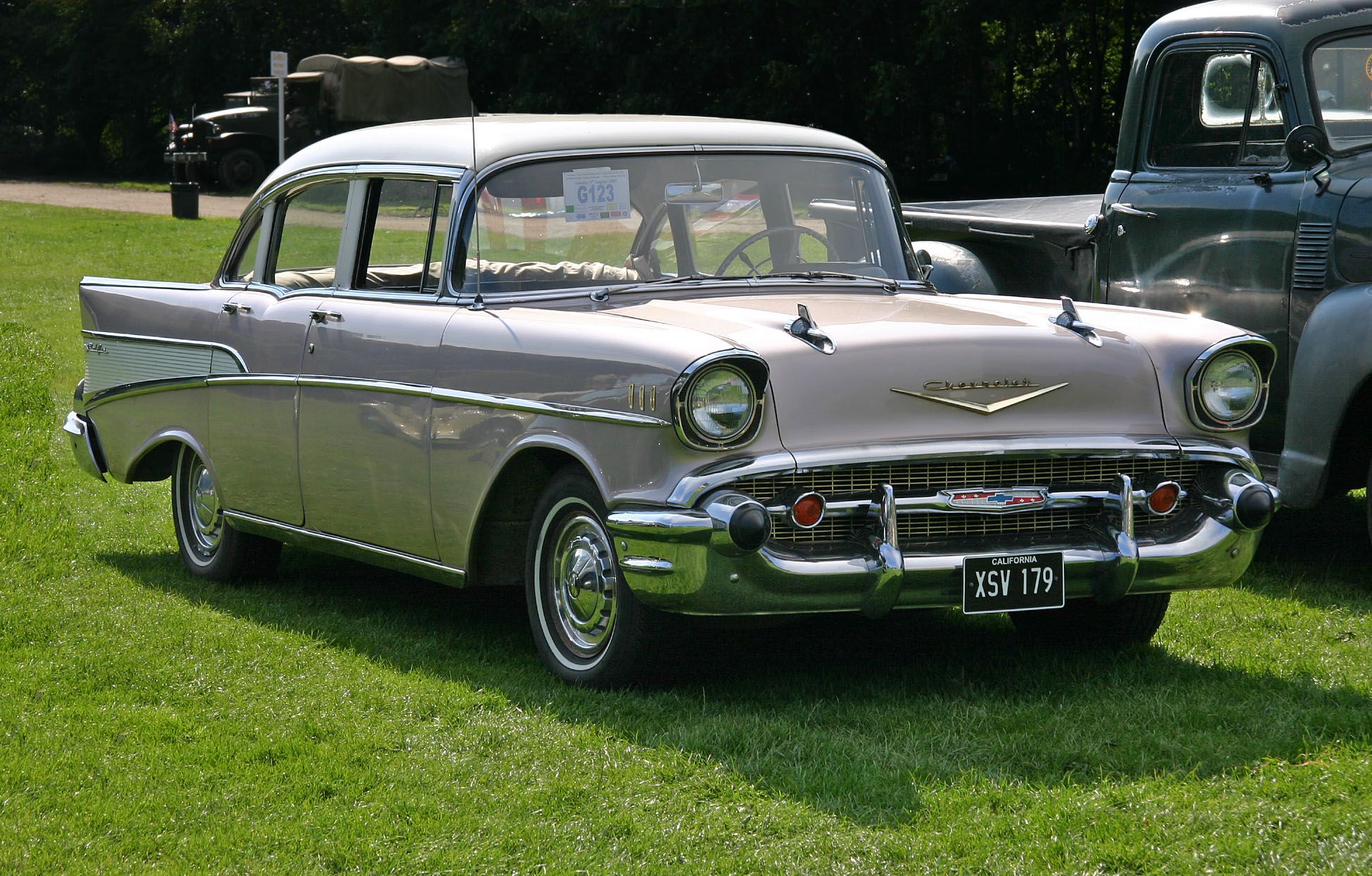
5. **1957 Chevrolet Bel Air** The 1957 Chevrolet Bel Air stands as a magnificent, gleaming symbol of 1950s Americana, instantly recognizable and deeply nostalgic. Its design is characterized by an opulent display of chrome accents, bold, distinctive tailfins that exuded a sense of forward motion, and an overall aesthetic that captured the optimism and prosperity of the era. This iconic styling, often rendered in vibrant two-tone paint schemes, made the Bel Air an unmistakable presence on the roads and a true embodiment of mid-century American automotive flair.
Underneath its stylish exterior, the Bel Air was engineered with performance in mind, offering a driving experience that matched its flashy looks. It featured a powerful 283 cubic inch V8 engine, providing ample power and a satisfying rumble that resonated with enthusiasts. For those seeking even greater performance, an optional fuel injection system was available, further enhancing its capabilities and solidifying its reputation as a versatile and potent machine capable of cruising comfortably or delivering spirited acceleration.
The 1957 Bel Air remains a timeless classic, consistently sought after by collectors for its compelling combination of iconic design, robust performance, and profound historical significance. It is more than just a car; it’s a rolling piece of American history, capturing the essence of an optimistic decade. Its enduring appeal ensures that it continues to be a favorite among enthusiasts who appreciate the distinctive blend of style and substance that defines this unforgettable icon, making it a highly desirable centerpiece for any vintage collection.
Car Model Information: 2024 Genesis GV70 2.5T AWD
Name: Chevrolet Bel Air
Caption: 1957 Chevrolet Bel Air convertible
Manufacturer: Chevrolet
Production: 1949–1980
ModelYears: 1950–1981
Class: Full-size
Layout: FR layout
Predecessor: Chevrolet Fleetline,Chevrolet Biscayne
Successor: Chevrolet Impala
Categories: 1950s cars, 1960s cars, 1970s cars, 1980s cars, Articles with short description
Summary: The Chevrolet Bel Air is a full-size car produced by Chevrolet for the 1950–1981 model years. Initially, only the two-door hardtops in the Chevrolet model range were designated with the Bel Air name from 1950 to 1952. With the 1953 model year, the Bel Air name was changed from a designation for a unique body shape to a premium level of trim applied across a number of body styles. The Bel Air continued with various other trim level designations, and it had gone from a mid-level trim car to a budget fleet sedan when U.S. production ceased in 1975. Production continued in Canada, for its home market only, through the 1981 model year.
Get more information about: Chevrolet Bel Air
Buying a high-performing used car >>>
Brand: Chevrolet Model: Bel Air
Price: $39,995 Mileage: 20,074 mi.
Read more about: The 10 Exciting Classic Sports Cars You Can Own Without Breaking the Bank
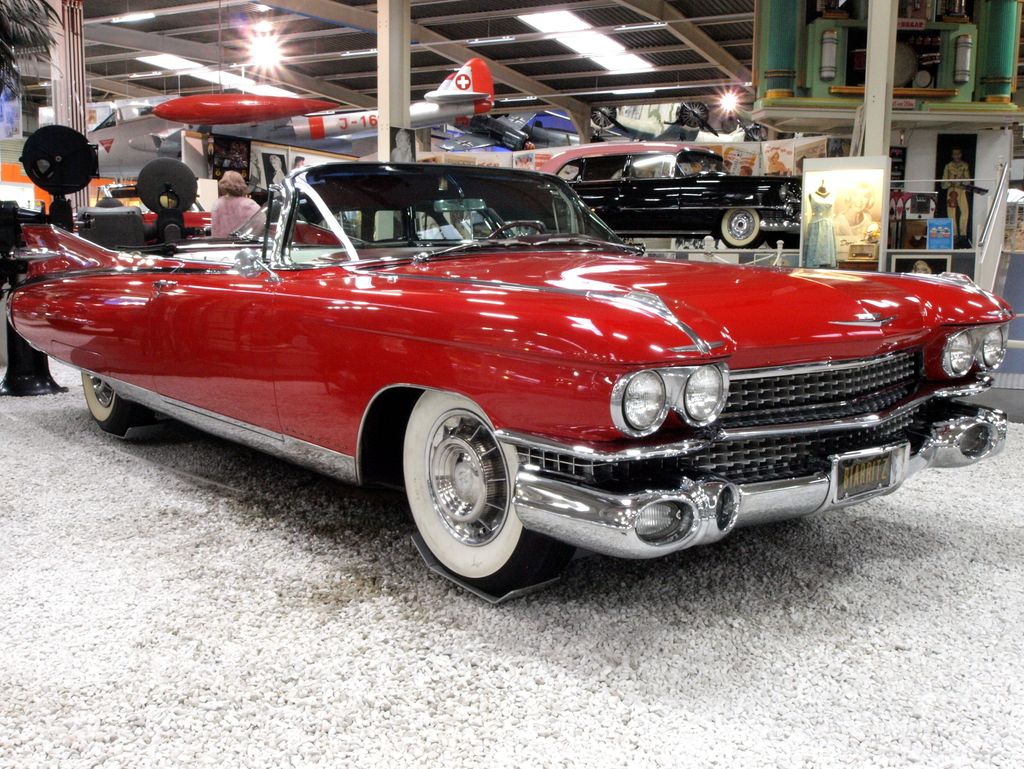
6. **1959 Cadillac Eldorado** The 1959 Cadillac Eldorado boldly embodies the very essence of 1950s extravagance, a period defined by audacious design and luxurious excess. This vehicle is famed, above all, for its truly massive tailfins, which soared skyward in a dramatic, almost sculptural display of automotive artistry. Complementing these towering fins was an abundance of chrome detailing, meticulously applied to every curve and contour, contributing to an overall aesthetic of unparalleled opulence and commanding road presence that made it instantly identifiable and deeply aspirational.
Beneath its dazzling exterior, the Eldorado housed a powerful 390 cubic inch V8 engine, a formidable powerplant that ensured smooth, effortless propulsion befitting its luxury status. This robust engine delivered a refined yet authoritative driving experience, affirming Cadillac’s commitment to both performance and comfort. The Eldorado was not just about raw power; it also showcased Cadillac’s innovative spirit, incorporating advanced features for its time, such as power windows and an air suspension system, which further enhanced its reputation for cutting-edge luxury and passenger comfort.
For collectors, the 1959 Cadillac Eldorado is a highly coveted classic, representing the zenith of mid-century American automotive design and luxury. Its over-the-top styling, particularly the iconic tailfins, along with its advanced features and powerful engine, make it a true statement piece. It encapsulates a unique era of automotive expression, appealing to those who appreciate a vehicle that combines historical significance with an unbridled sense of grandiosity and unapologetic flair, solidifying its place in the pantheon of dream garage vehicles.
Car Model Information: 1975 Cadillac Eldorado Convertible
Caption: 1963 Cadillac Eldorado Convertible
Name: Cadillac Eldorado
Manufacturer: Cadillac
Production: 1952–2002
Layout: Front-engine, rear-wheel-drive layout
Aka: Cadillac Fleetwood Eldorado
Class: Personal luxury car
Successor: Cadillac CTS
Categories: 1960s cars, 1970s cars, 1980s cars, 1990s cars, 2000s cars
Summary: The Cadillac Eldorado is a luxury car manufactured and marketed by the Cadillac Motor Car Division of General Motors from 1952 until 2002, over twelve generations.
The Eldorado was at or near the top of the Cadillac product line. The original 1953 Eldorado convertible and the Eldorado Brougham models of 1957–1960 had distinct bodyshells and were the most expensive models offered by Cadillac during those years. The Eldorado was never less than second in price after the Cadillac Series 75 limousine until 1966. Beginning in 1967, the Eldorado retained its premium position in the Cadillac price structure, but was manufactured in high volumes on a unique, two-door personal luxury car platform.
The Eldorado carried the Fleetwood designation from 1965 through 1972, and was seen as a modern revival of the pre-war Cadillac V-12 and Cadillac V-16 roadsters and convertibles.
Get more information about: Cadillac Eldorado
Buying a high-performing used car >>>
Brand: Cadillac Model: Eldorado
Price: $12,999 Mileage: 87,000 mi.
Read more about: Beyond the Malaise: 15 Rare American Cars from the 1970s That Defied Expectations
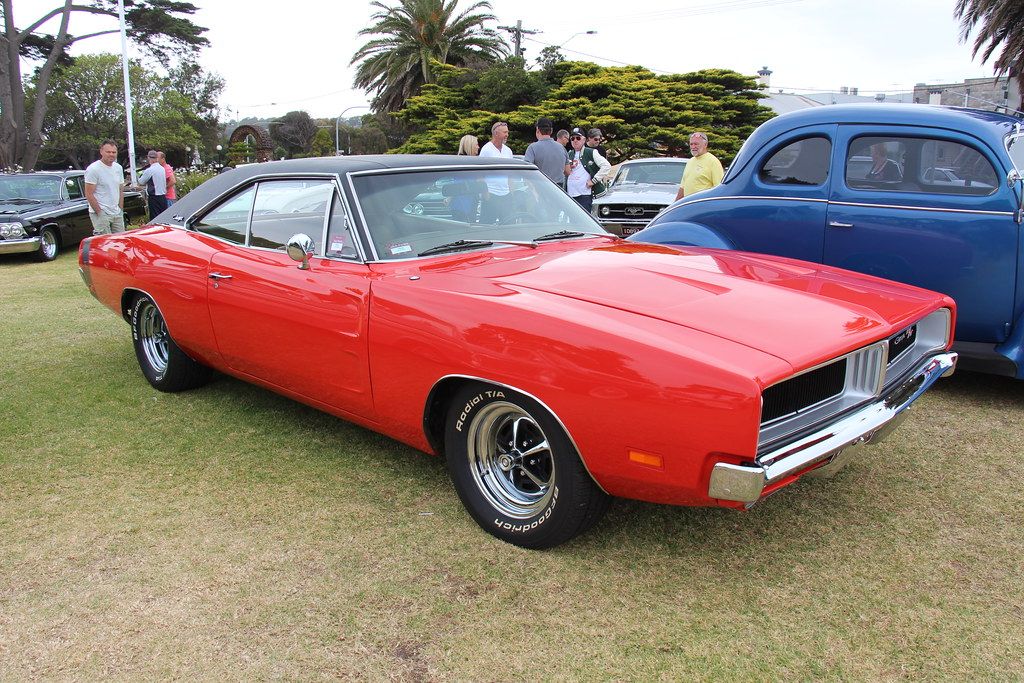
7. **1969 Dodge Charger** The 1969 Dodge Charger stands as an enduring icon of the muscle car era, a vehicle whose aggressive styling and raw power have indelibly marked automotive history. Its legendary status was significantly amplified by its starring role in the popular television series “The Dukes of Hazzard,” which introduced its distinctive lines to a global audience and cemented its image as a symbol of rebellious American power. The Charger’s design, with its aggressive split grille and unmistakable “Coke bottle” shape, made it a standout on any road, commanding attention with its sheer presence.
At the heart of the Charger’s formidable reputation was its incredible performance, particularly in its R/T (Road/Track) configuration. This potent version came equipped with a monstrous 440 cubic inch V8 engine, a powerhouse renowned for delivering impressive, tire-shredding performance that thrilled enthusiasts. This immense power, coupled with its robust chassis, allowed the Charger to dominate both the drag strip and the street, embodying the very essence of American muscle and high-octane excitement.
The 1969 Dodge Charger remains highly desirable for collectors, embodying a potent blend of raw power, unmistakable style, and undeniable pop culture relevance. Its aggressive looks, blistering performance, and enduring association with an iconic television show ensure its continuous demand in the classic car market. It’s a vehicle that resonates deeply with enthusiasts, representing a thrilling chapter in automotive history where performance and attitude converged to create an unforgettable legend, making it an essential and thrilling addition to any performance-oriented collection.
Car Model Information: 2022 Dodge Charger SXT
Name: Dodge Charger
Caption: 1969 Dodge Charger
Manufacturer: Dodge
Production: 1966–1978,1981–1987,2005–present
ModelYears: 1966–1978,1982–1987,2006–present
Categories: 1960s cars, 1970s cars, 1980s cars, 2000s cars, 2010s cars
Summary: The Dodge Charger is a model of automobile marketed by Dodge in various forms over eight generations since 1966.
The first Charger was a show car in 1964. A 1965 Charger II concept car resembled the 1966 production version.
In the United States, the Charger nameplate has been used on mid-size cars, personal luxury coupes, subcompact hatchbacks, and full-size sedans.
Get more information about: Dodge Charger
Buying a high-performing used car >>>
Brand: Dodge Model: Charger
Price: $22,988 Mileage: 34,013 mi.
Read more about: Unleash the Roar: 14 Badass Golden Era Muscle Cars You Can Still Own Without Breaking the Bank
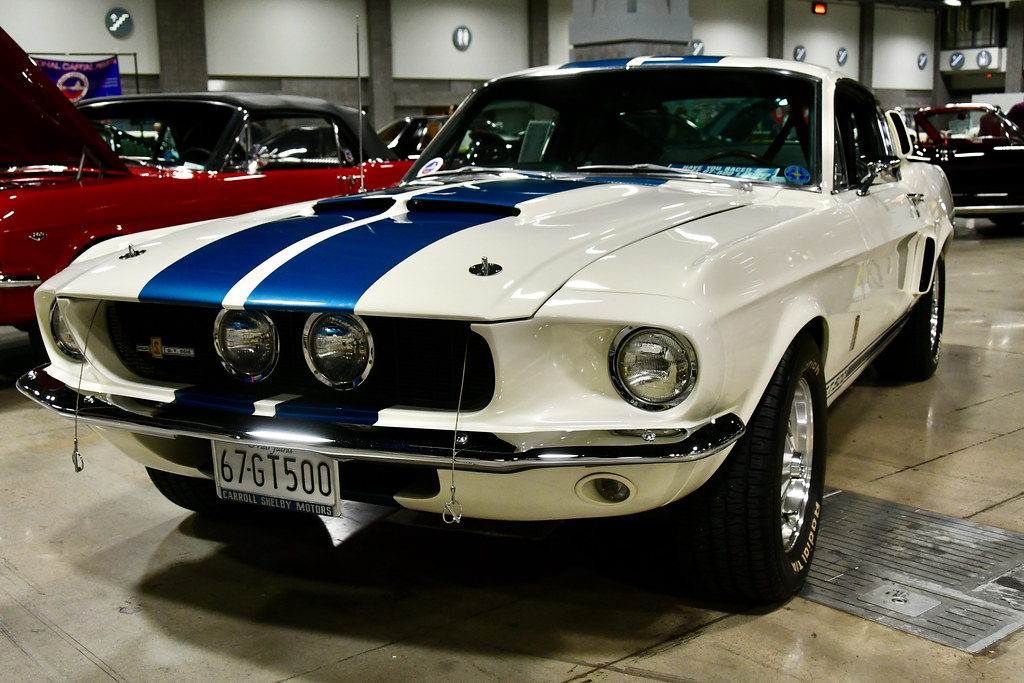
8. **1967 Shelby GT500**Born from the legendary vision of Carroll Shelby, the 1967 Shelby GT500 emerged not merely as a high-performance variant of the Ford Mustang, but as a dominant force in the burgeoning muscle car scene. This formidable machine solidified Shelby’s reputation for transforming capable production cars into formidable, road-devouring beasts. It masterfully combined aggressive, purposeful styling with an exceptionally potent powertrain, creating a package that was undeniably American muscle and instantly recognizable. Its debut was met with immediate acclaim, capturing the essence of an era when horsepower reigned supreme.
At the heart of the GT500’s commanding prowess was its robust 428 cubic inch ‘Cobra Le Mans’ V8 engine, a powerhouse meticulously tuned to produce an impressive 355 horsepower. This substantial output ensured that the GT500 delivered exhilarating, tire-shredding acceleration and formidable top-end performance, living up to its aggressive visual cues. Furthermore, its distinctive aggressive styling, characterized by prominent racing stripes, unique front grilles, and functional additional air scoops, underscored its serious performance capabilities, signaling its intent to dominate the road.
For serious collectors and discerning performance enthusiasts, the 1967 Shelby GT500 remains an extraordinarily highly coveted classic. Its profound allure stems from a rare combination of limited production numbers, blistering performance, and its direct, undeniable connection to Carroll Shelby’s revered racing legacy and innovative spirit. Owning a GT500 is akin to possessing a tangible, living piece of automotive history, a testament to an era when raw power and distinctive styling converged to create truly unforgettable driving experiences that continue to thrill and captivate admirers today. It’s a cornerstone for any collection focusing on the golden age of American performance.
Read more about: Back to the Roaring Nineties: 10 Legendary American Muscle Machines That Honored Their Heritage
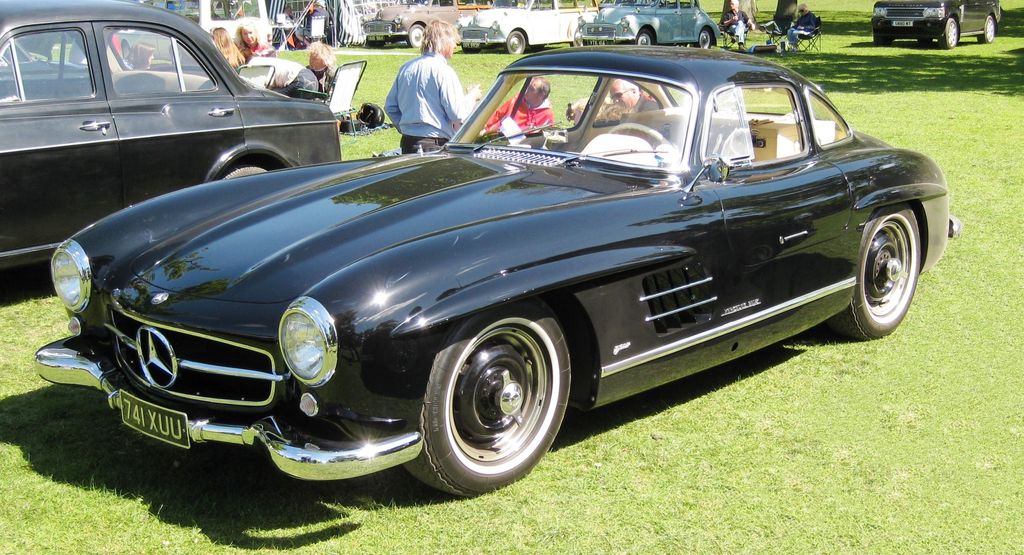
9. **1954 Mercedes-Benz 300 SL Gullwing**The 1954 Mercedes-Benz 300 SL Gullwing stands as a singular masterpiece of automotive innovation, recognized globally for its revolutionary engineering and timeless design. Its iconic gullwing doors, hinged dramatically from the roof, were an engineering solution for its unique tubular space-frame chassis. These doors quickly became one of the most distinctive and admired design elements in automotive history, firmly establishing the 300 SL as a benchmark for sports car aesthetics.
Beneath its striking exterior, the 300 SL was an engineering marvel, featuring a highly advanced 3.0-liter inline-six engine. This powerplant was groundbreaking, being the first production car engine to utilize direct fuel injection, a sophisticated technology that significantly boosted its efficiency, power output, and throttle response. Such advanced engineering propelled the Gullwing to an astonishing top speed of 160 mph, making it one of the fastest production cars of its era and showcasing Mercedes-Benz’s unwavering commitment to pushing performance boundaries.
For discerning collectors, the 300 SL Gullwing represents the pinnacle of post-war automotive engineering and design excellence. Its exceptional rarity, combined with its profound historical significance as a technological pioneer and an undisputed aesthetic icon, ensures its enduring appeal in the classic car market. This magnificent machine is far more than just a car; it’s a profound statement of luxury, high performance, and visionary design that continues to command immense respect and admiration in any elite collection.
Car Model Information: 2022 Mazda CX-5 2.5 S Premium
Name: Mercedes-Benz 300 SL
Caption: 300 SL roadster and gullwinged coupé
Manufacturer: Mercedes-Benz
Production: Mercedes-Benz 300 SLR#Uhlenhaut Coupé
Assembly: Stuttgart
Designer: Friedrich Geiger
Class: Sports car,Grand tourer
BodyStyle: coupé,Roadster (automobile)
Platform: Coupé W198 I, Roadster W198 II
Related: Mercedes-Benz 190 SL
Layout: FR layout
Engine: 2996 cc
Abbr: off
Transmission: Manual transmission
Wheelbase: 2400 mm
Length: 4520 mm
Width: 1790 mm
Height: 1300 mm
Weight: 1500 kg
Predecessor: Mercedes-Benz W194
Successor: Mercedes-Benz W113
Doors: Gull-wing door
Categories: 1960s cars, 24 Hours of Le Mans race cars, All Wikipedia articles needing clarification, All Wikipedia articles written in American English, All articles with vague or ambiguous time
Summary: The Mercedes-Benz 300 SL (chassis code W 198) is a two-seat sports car that was produced by Mercedes-Benz from 1954 to 1957 as a gullwinged coupé and from 1957 to 1963 as a roadster. The 300 SL traces its origins to the company’s 1952 racing car, the W194, and was equipped with a mechanical direct fuel-injection system that significantly increased the power output of its three-liter overhead camshaft straight-six engine.
The 300 SL was capable of reaching speeds of up to 260 km/h (162 mph), earning it a reputation as a sports car racing champion and making it the fastest production car of its time. The car’s iconic gullwing doors and innovative lightweight tubular-frame construction contributed to its status as a groundbreaking and highly influential automobile.
The designation “SL” is an abbreviation of the German term super-leicht, meaning “super-light”, a reference to the car’s racing-bred lightweight construction. The 300 SL was introduced to the American market at the suggestion of Max Hoffman, Mercedes-Benz’s United States importer at the time, who recognized the potential demand for a high-performance sports car among American buyers. The Mercedes-Benz 300 SL remains a highly sought-after classic car and is celebrated for its performance, design, and technological advancements.
Get more information about: Mercedes-Benz 300 SL
Buying a high-performing used car >>>
Brand: Mercedes-Benz Model: 300 SL
Price: $25,680 Mileage: 32,780 mi.
Read more about: Unveiling Automotive Legends: The 15 Most Expensive and Rarest Cars in the World (2025 Edition)
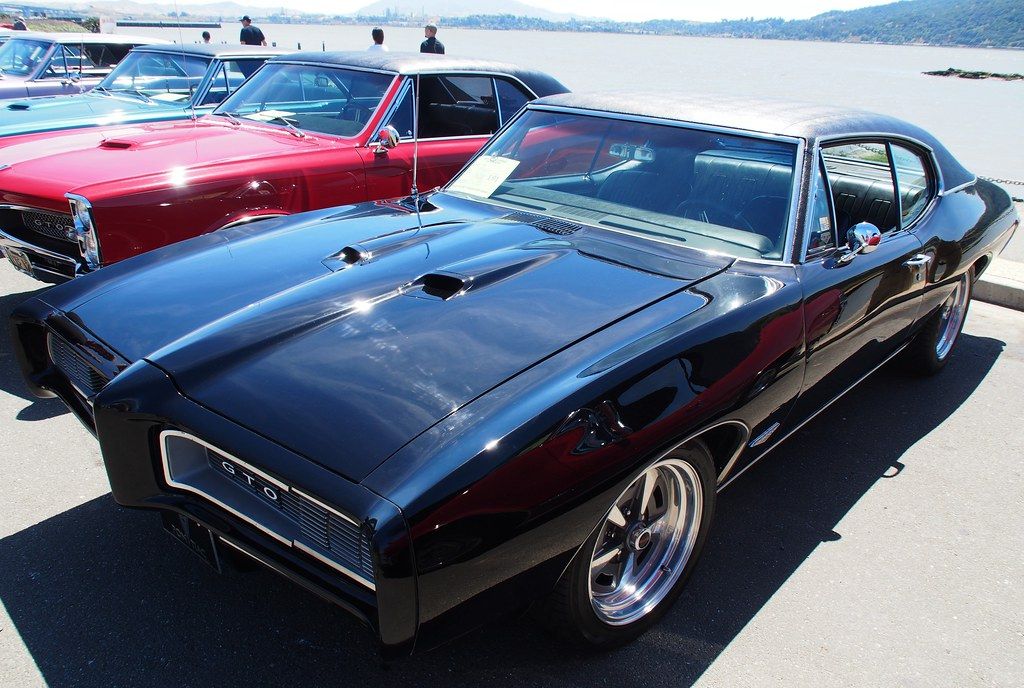
10. **1968 Pontiac GTO**The 1968 Pontiac GTO holds a pivotal place in automotive lore, widely recognized as the vehicle that truly ignited the muscle car era, defining a genre of powerful, performance-oriented machines accessible to a broader audience. Its bold styling and robust engineering perfectly captured the spirit of an era focused on raw speed and unbridled personal expression. This model year, in particular, introduced a restyled, more aggressive body, cementing its formidable reputation as a dominant presence on American roads and drag strips.
Under the hood, the 1968 GTO delivered emphatically on its visual promise of power and performance. It typically came equipped with a formidable 400 cubic inch V8 engine, which provided exhilarating acceleration and a visceral driving experience synonymous with true American muscle cars. Distinguishing design elements, such as the functional hood scoops and the revolutionary Endura front bumper, further amplified its aggressive stance and innovative character, setting it distinctly apart from its contemporaries.
As a highly sought-after classic, the Pontiac GTO’s enduring appeal lies in its potent blend of raw power, distinctive style, and profound historical significance within the automotive landscape. It continues to be a perennial favorite among car enthusiasts who appreciate its no-nonsense performance capabilities and its undeniable contribution to shaping American automotive culture. The 1968 GTO remains a powerful testament to an exciting period of innovation, embodying the quintessential muscle car spirit that continues to thrill and inspire collectors worldwide.
Car Model Information: 1966 Pontiac GTO Coupe
Name: Pontiac GTO
Caption: 2005 Pontiac GTO
Manufacturer: Pontiac (automobile),Holden
Class: Mid-size car,Compact car,Mid-size car
Production: 1963–1974,2003–2006
Predecessor: Pontiac Tempest
Layout: Front-engine, rear-wheel-drive layout
Categories: 1970s cars, 2000s cars, All articles with unsourced statements, Articles with short description, Articles with unsourced statements from October 2008
Summary: The Pontiac GTO is a front-engine, rear-drive, two-door, and four-passenger automobile manufactured and marketed by the Pontiac division of General Motors over four generations from 1963 until 1974 in the United States — with a fifth generation made by GM’s Australian subsidiary, Holden, for the 2004 through 2006 model years.
The first generation of the GTO is credited with popularizing the muscle car market segment in the 1960s. Some consider the Pontiac GTO to have started the trend with all four domestic automakers offering a variety of competing models.
For the 1964 and 1965 model years, the GTO was an optional package on the intermediate-sized Pontiac LeMans. The 1964 GTO vehicle identification number (VIN) started with 22, while the 1965 GTO VIN began with 237. The GTO was designated as a separate Pontiac model from 1966 through 1971 (VIN 242…). It became an optional package again for the 1972 and 1973 intermediate LeMans. For 1974, the GTO was an optional trim package on the compact-sized Ventura.
The GTO model was revived for the 2004 through 2006 model years as a captive import for Pontiac, a left-hand drive version of the Holden Monaro, itself a coupé variant of the Holden Commodore.
Get more information about: Pontiac GTO
Buying a high-performing used car >>>
Brand: Pontiac Model: GTO
Price: $59,991 Mileage: 4,408 mi.
Read more about: Unleash the Roar: 14 Badass Golden Era Muscle Cars You Can Still Own Without Breaking the Bank
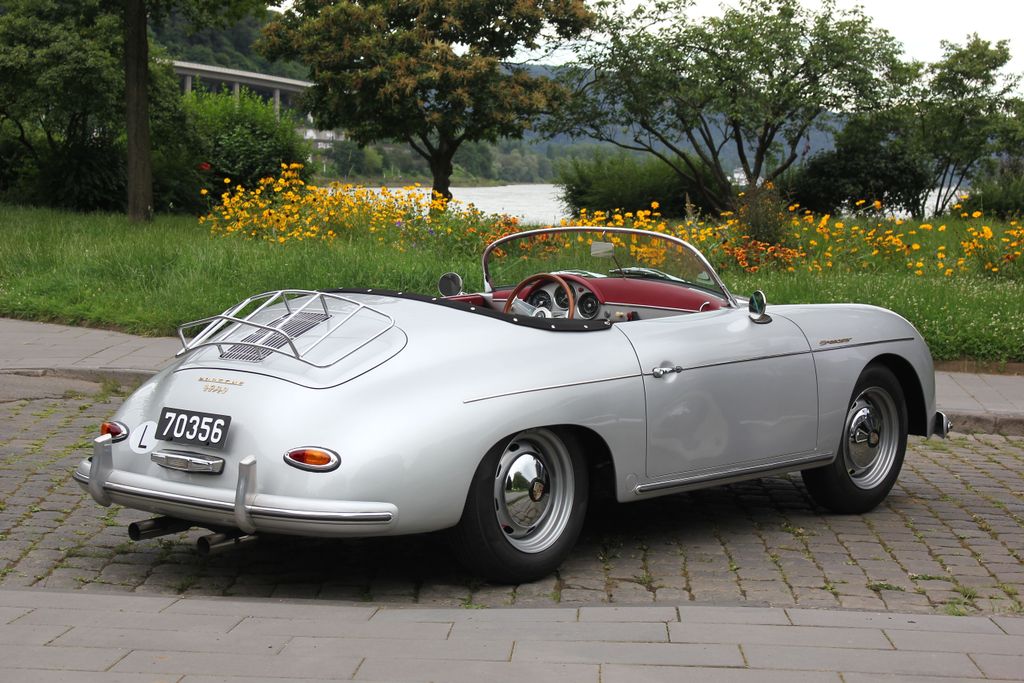
11. **1956 Porsche 356 Speedster**The 1956 Porsche 356 Speedster is a testament to minimalist design and pure driving exhilaration, embodying the philosophy of lightness and agile handling synonymous with the Porsche brand. Conceived primarily for the burgeoning American sports car market, its low-slung, open-top body and stripped-down interior were meticulously designed to offer a direct, unfiltered, and deeply engaging driving experience. This focus on driver involvement made it an immediate favorite among sports car enthusiasts and early amateur racers.
Despite its outwardly modest 1.6-liter flat-four engine, the Speedster’s exceptionally lightweight construction and perfectly balanced chassis more than compensated for raw horsepower, providing incredibly nimble handling and a truly thrilling, responsive driving sensation. This precise engineering philosophy allowed drivers to fully exploit the car’s dynamic capabilities, making every curve and straight an opportunity for spirited engagement and precise control. Its responsive nature and direct feedback earned it an unparalleled reputation as a true ‘driver’s car.’
Today, the 1956 Porsche 356 Speedster is a profoundly highly coveted collectible, celebrated globally for its timeless appeal, inherent rarity, and iconic design. Its enduring charm and profound influence on subsequent Porsche models make it an indispensable addition to any serious collection. It impeccably represents an era where simplicity, elegance, and unadulterated driving pleasure converged, embodying a purist’s ideal of what a true sports car should be and securing its well-deserved place as a dream machine for collectors worldwide.
Car Model Information: 2022 Mazda CX-5 2.5 S Premium
Name: Porsche 356
Manufacturer: unbulleted list
Production: 1948–1965
Assembly: Gmünd, Carinthia
Successor: Porsche 911 (classic)
Caption: Porsche 356 C coupé
Class: Sports car
Related: unbulleted list
Layout: Rear-engine, rear-wheel-drive layout
BodyStyle: unbulleted list
Designer: Ferry Porsche,Erwin Komenda
Wheelbase: 82.7 in
Abbr: on
Order: flip
Length: convert
Width: 65.4 in
Height: convert
Weight: convert
Categories: 1950s cars, 1960s cars, 24 Hours of Le Mans race cars, All Wikipedia articles written in American English, All articles containing potentially dated statements
Summary: The Porsche 356 is a rear-engine sports car, and the first ever production Porsche model.
The 356 is a lightweight and nimble-handling, rear-engine, rear-wheel drive, two-door available both in hardtop coupé and open configurations. Engineering innovations continued during the years of manufacture, contributing to its motorsports success and popularity. Production started in 1948 at Gmünd, Austria, where Porsche built approximately 50 cars. In 1950 the factory relocated to Zuffenhausen, Germany, and general production of the 356 continued until April 1965, well after the replacement model 911 made its September 1964 debut. Of the 76,000 originally produced, approximately half survive. It was first produced by Austrian company Porsche Konstruktionen GesmbH (1948–1949), and then by German company Dr. Ing. h. c. F. Porsche GmbH (1950–1965). It was Porsche’s first production automobile. Earlier cars designed by the Austrian company include Cisitalia Grand Prix race car, the Volkswagen Beetle, and Auto Union Grand Prix cars.
The original price in 1948 for the 356 coupe was US$3,750 (equivalent to $49,100 in 2024) (official general USD inflation). The 356 cabriolet cost US$4,250 (equivalent to $55,600 in 2024).
Get more information about: Porsche 356
Buying a high-performing used car >>>
Brand: Porsche Model: 356 Speedster
Price: $25,680 Mileage: 32,780 mi.
Read more about: From Bullitt to Le Mans: The 15 Most Iconic Cars of Steve McQueen

12. **1969 Plymouth Road Runner**The 1969 Plymouth Road Runner stands as a quintessential representation of the muscle car ethos: delivering impressive performance at an extraordinarily affordable price point. Chrysler’s Plymouth division, in a stroke of marketing genius, partnered with Warner Bros. to license the popular Road Runner cartoon character, imbuing the car with a playful yet undoubtedly serious attitude towards speed. This strategic branding, combined with its refreshingly no-frills approach, made it an instant hit among enthusiasts looking for raw speed and excitement without breaking the bank.
Under the hood, the Road Runner was unequivocally built for business, prioritizing brute force and acceleration. It typically featured a robust 383 cubic inch ‘Road Runner’ V8 engine, renowned for its strong torque and formidable horsepower, which provided impressive straight-line acceleration and a satisfying, authoritative exhaust note. To maintain its budget-friendly appeal, the interior was deliberately stripped-down, focusing solely on the essentials required for a pure driving experience rather than lavish comforts, underscoring its primary purpose: unadulterated performance.
Adding significantly to its unique charm and brand identity, the Road Runner featured an iconic “beep-beep” horn, a direct and playful nod to its cartoon namesake, which became a signature element of the car’s personality. This distinctive feature, coupled with the vehicle’s unpretentious power and unmistakable presence on the street, ensures its continuous and strong desirability among collectors. The 1969 Plymouth Road Runner perfectly encapsulates an era where performance was paramount and accessible, making it a celebrated and nostalgic piece of American automotive history for any muscle car enthusiast.
Car Model Information: 2022 Mazda CX-5 2.5 S Premium
Name: Plymouth Road Runner
Assembly: Detroit,Michigan
Manufacturer: Plymouth (automobile)
Class: Mid-size car
Production: 1968–1980
Related: unbulleted list
Layout: FR layout
Categories: 1970s cars, 1980s cars, All articles needing additional references, All articles with peacock terms, All articles with unsourced statements
Summary: The Plymouth Road Runner is a muscle car introduced by Chrysler in the United States for the 1968 model year and marketed under its Plymouth brand. Initially based on the Belvedere, the brand’s basic mid-size model, the Road Runner combined a powerful engine with a spartan trim level and a price that undercut increasingly upscale and expensive muscle cars such as the Pontiac GTO and Plymouth’s own GTX. It was initially a sales success.
The Road Runner was built in three generations on the mid-size B platform. Like most muscle cars, its performance and sales declined in the 1970s due to an increasing focus on fuel economy and the adoption of more stringent U.S. emission standards. The nameplate became to a trim package for the compact Plymouth Volaré for model year 1976—no longer offering any special performance capability—and was discontinued in 1980.
Get more information about: Plymouth Road Runner
Buying a high-performing used car >>>
Brand: Plymouth Model: Road Runner
Price: $25,680 Mileage: 32,780 mi.
Read more about: Unearthing Automotive Legends: 14 of the Rarest American Muscle Cars That Command the Roads
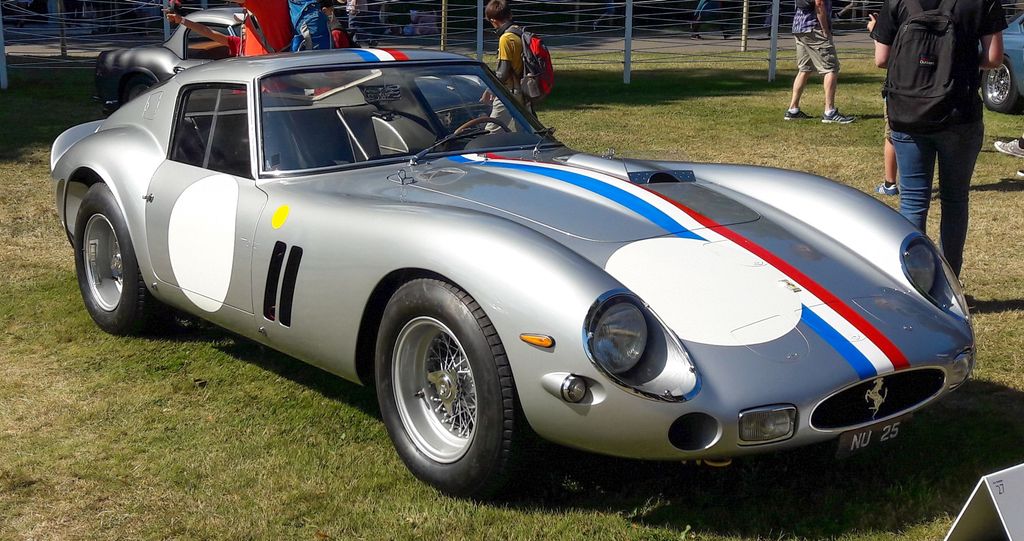
13. **1963 Ferrari 250 GTO**The 1963 Ferrari 250 GTO is not merely a car; it is universally regarded as one of the most valuable, iconic, and passionately sought-after classic automobiles ever created. Seamlessly blending breathtaking design with an unparalleled racing pedigree, this masterpiece from Maranello represents the absolute zenith of Ferrari’s golden age of sports car production. Its handcrafted elegance, purposeful lines, and aerodynamic efficiency were crucial to its dominant success on the world’s most demanding race tracks, contributing significantly to its enduring, almost mythical, allure.
Powering the 250 GTO was Ferrari’s renowned Colombo-designed 3.0-liter V12 engine, a meticulously engineered powerplant capable of producing a formidable 300 horsepower. This exceptionally capable engine, combined with an ultra-lightweight chassis and finely tuned handling dynamics, allowed the 250 GTO to excel with incredible agility and speed on both challenging road courses and high-speed circuits. Its consistent victories in prestigious endurance races and championships cemented its legendary status, proving its undeniable mettle against the toughest international competition of its era.
With only 36 units ever produced, the 1963 Ferrari 250 GTO’s extreme rarity profoundly enhances its allure and exclusivity, placing it at the very pinnacle of collector car desirability and value. Collectors do not just acquire a vehicle when they obtain a 250 GTO; they secure a tangible piece of racing royalty, an automotive sculpture that embodies unparalleled beauty, relentless performance, and irreplaceable historical significance. It remains the ultimate dream machine for any serious automotive connoisseur, a truly irreplaceable asset and a cornerstone of automotive legend.
Car Model Information: 2022 Mazda CX-5 2.5 S Premium
Name: Ferrari 250 GTO
Caption: 1963 Ferrari 250 GTO (chassis 4153GT)
Manufacturer: Ferrari
Production: 1962–1964,(36 produced)
Designer: Giotto Bizzarrini,Scaglietti
Class: Sports car
BodyStyle: berlinetta
Related: Ferrari 330#330 LMB,Ferrari P#250 LM
Layout: FR layout
Engine: 2,953 cc,Ferrari Colombo engine#250,Overhead camshaft#Single Overhead camshatf,Weber carburetor,Compression ratio
Powerout: 300 PS
Abbr: on
Order: flip @ 5500 rpm
Transmission: Manual transmission
Wheelbase: 2400 mm
Length: 4325 mm
Width: 1600 mm
Height: 1210 mm
Weight: convert
Predecessor: Ferrari 250 GT SWB
Successor: Ferrari 250 LM,Ferrari 288 GTO
Categories: All articles lacking reliable references, All articles needing additional references, All articles with bare URLs for citations, All articles with unsourced statements, Articles lacking reliable references from March 2022
Summary: The Ferrari 250 GTO is a grand tourer produced by Ferrari from 1962 to 1964 for homologation into the FIA’s Group 3 Grand Touring Car category. It was powered by Ferrari’s Tipo 168/62 Colombo V12 engine. The “250” in its name denotes the displacement in cubic centimeters of each of its cylinders; “GTO” stands for Gran Turismo Omologato, Italian for “Grand Touring Homologated”.
Just 36 of the 250 GTOs were manufactured between 1962 and 1964. This includes 33 cars with 1962–63 bodywork (Series I) and three with 1964 (Series II) bodywork similar to the Ferrari 250 LM. Four of the older 1962–1963 (Series I) cars were updated in 1964 with Series II bodies.
When new, the 250 GTO cost $18,000 in the United States, with buyers personally approved by Enzo Ferrari and his dealer for North America, Luigi Chinetti. This model has since become highly desired by automobile collectors and sales have repeatedly set price records. The current record for world’s most expensive Ferrari was set in June 2018 when a 1963 250 GTO (chassis 4153GT) was sold in a private sale for $70 million.
In 2004, Sports Car International placed the 250 GTO eighth on their list of Top Sports Cars of the 1960s, and nominated it the top sports car of all time. Similarly, Motor Trend Classic placed the 250 GTO first on a list of the “Greatest Ferraris of All Time”. Popular Mechanics named it the “Hottest Car of All Time”.
Get more information about: Ferrari 250 GTO
Buying a high-performing used car >>>
Brand: Ferrari Model: 250 GTO
Price: $25,680 Mileage: 32,780 mi.
Read more about: Unveiling Automotive Legends: The 15 Most Expensive and Rarest Cars in the World (2025 Edition)
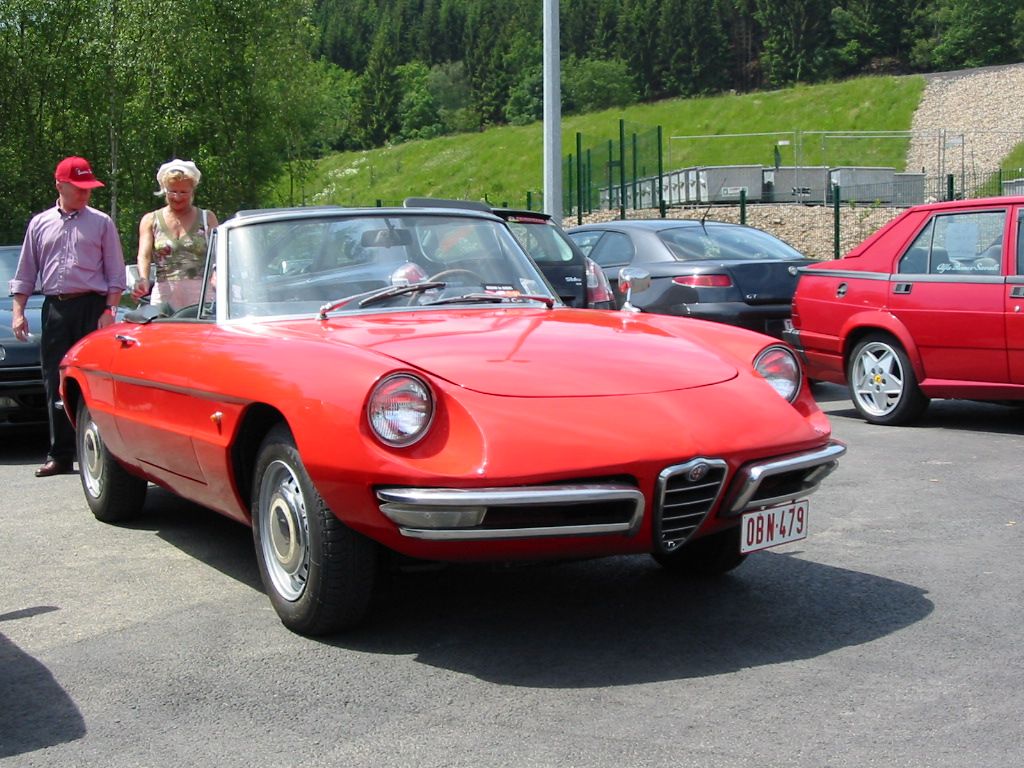
14. **1966 Alfa Romeo Spider Duetto**The 1966 Alfa Romeo Spider Duetto achieved widespread fame and cemented its iconic status through its memorable appearance in the classic film “The Graduate,” becoming synonymous with youthful freedom and timeless European charm. Its Pininfarina-designed body, characterized by its distinctive “boat-tail” rear and elegant, flowing lines, instantly captured the imagination, setting a new standard for roadster aesthetics. This perfect blend of cinematic presence and exquisite Italian design made it an instant, enduring classic across the globe.
Beyond its stunning looks, the Spider Duetto was meticulously engineered to deliver a genuinely engaging and spirited driving experience, a hallmark of Alfa Romeo’s commitment to driver involvement. Its lightweight construction and a finely tuned suspension system contributed to responsive handling and exceptional agility, making it an absolute joy to navigate on winding coastal roads and scenic routes. Power was supplied by a sprightly 1.6-liter inline-four engine, which provided more than enough spirited performance for its nimble chassis, encouraging drivers to fully explore its dynamic capabilities.
The 1966 Alfa Romeo Spider Duetto’s enduring appeal continues to captivate enthusiasts and discerning collectors today. Its harmonious blend of classic Italian styling, spirited and responsive driving dynamics, and a strong cultural footprint ensures its prominent place as a highly desirable vintage car. It’s a vehicle that gracefully evokes nostalgia for a simpler, more elegant era of motoring, making it a prized possession for those who appreciate exquisite design, unadulterated driving pleasure, and a cherished touch of Hollywood history gracing their garage.
Car Model Information: 2022 Mazda CX-5 2.5 S Premium
Name: Alfa Romeo Spider
Caption: Alfa Romeo Spider Series 2 (“Coda Tronca”)
Aka: Alfa Romeo “Duetto”
Manufacturer: Alfa Romeo
Assembly: Grugliasco,Turin
Production: 1966–1993
ModelYears: 1966–1994
Class: Sports car
Layout: Front-engine, rear-wheel-drive layout
BodyStyle: Roadster (automobile)
Related: Alfa Romeo Giulia,Alfa Romeo 105/115 Series Coupés
Designer: Aldo Brovarone
Predecessor: Alfa Romeo Giulietta (750/101)
Successor: Alfa Romeo GTV & Spider
Sp: uk
Categories: 1970s cars, 1980s cars, 1990s cars, Alfa Romeo vehicles, All articles needing additional references
Summary: The Alfa Romeo Spider (105/115 series) is a two-seater, front-engined, rear-drive roadster manufactured and marketed by Alfa Romeo from 1966 to 1994 in four distinct generations, or “series”, each with modifications ranging from modest to extensive.
As successor to the Giulia Spider, the Spider remained in production for almost three decades. The first three series were assembled by Pininfarina in Grugliasco and the fourth series in San Giorgio Canavese. The last Spider of that series was manufactured in April 1993—the last rear-wheel drive Alfa Romeo before the Alfa Romeo 8C Competizione of 2007.
In 2012, FCA Italy and Mazda studied the possibility of jointly developing a new Spider for 2015 based on the Mazda MX-5 platform. Ultimately, FCA and Mazda chose to manufacture a modern interpretation of the Fiat 124 Sport Spider rather than reviving the Alfa Romeo Spider.
Get more information about: Alfa Romeo Spider
Buying a high-performing used car >>>
Brand: Alfa Romeo Model: Spider Duetto
Price: $25,680 Mileage: 32,780 mi.
Read more about: Beyond the Auction Block: Unearthing 14 Surprisingly Affordable Classic Cars for Enthusiasts Today
These iconic vehicles, from the raw power of American muscle to the refined elegance of European grand tourers, collectively narrate a rich history of automotive innovation and passion. They are more than just modes of transportation; they are meticulously crafted works of art, engineering marvels, and cultural touchstones that continue to stir the hearts of enthusiasts worldwide. Each classic car on this list, whether revered for its groundbreaking design, its dominant performance, or its indelible mark on pop culture, offers a unique opportunity to connect with a glorious past where driving was an experience, and cars were built with distinct character. For any discerning collector, adding one of these legendary machines to their garage is not just an acquisition; it’s an embrace of history, a celebration of design, and an investment in timeless automotive excellence that truly makes every journey an extraordinary adventure.

